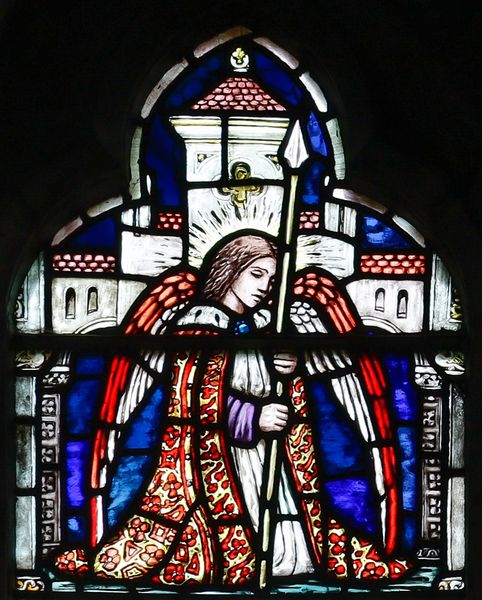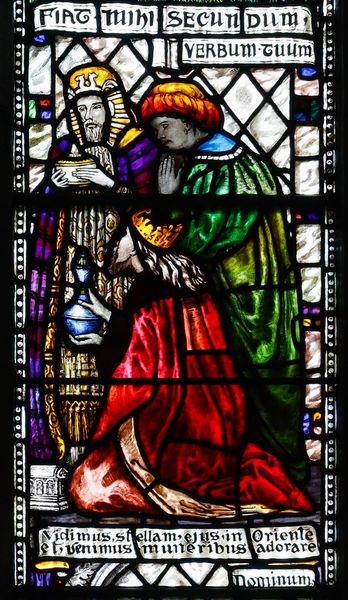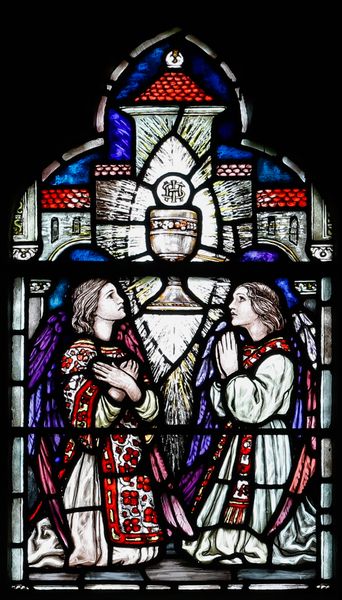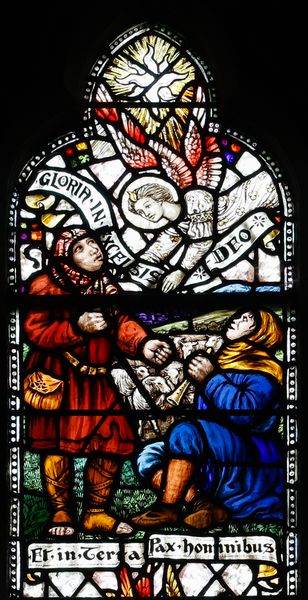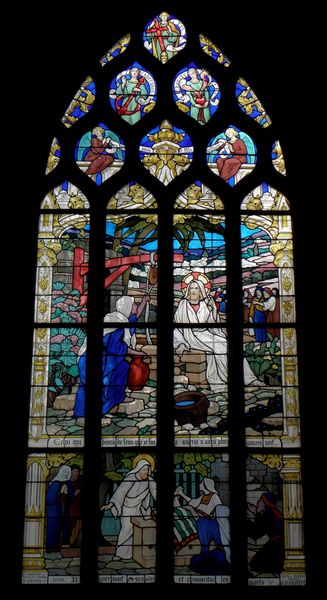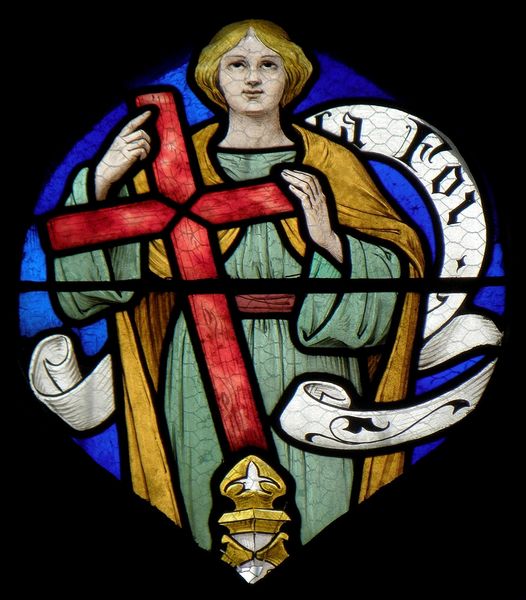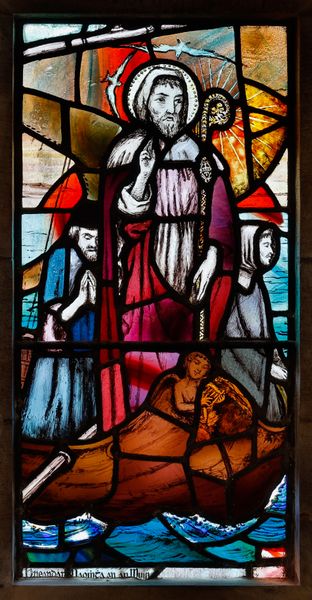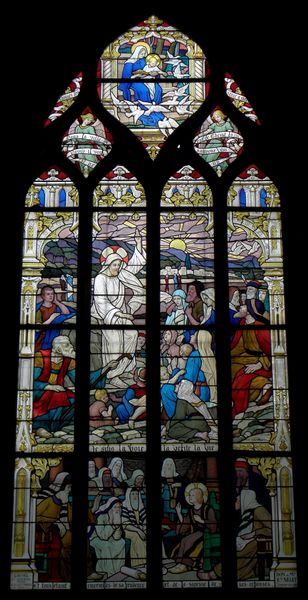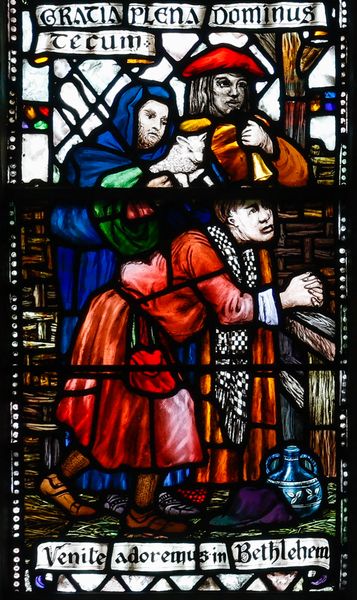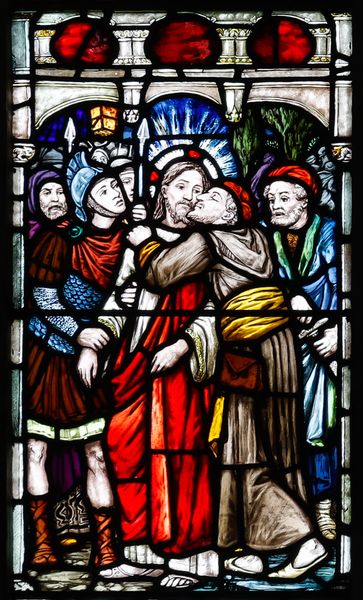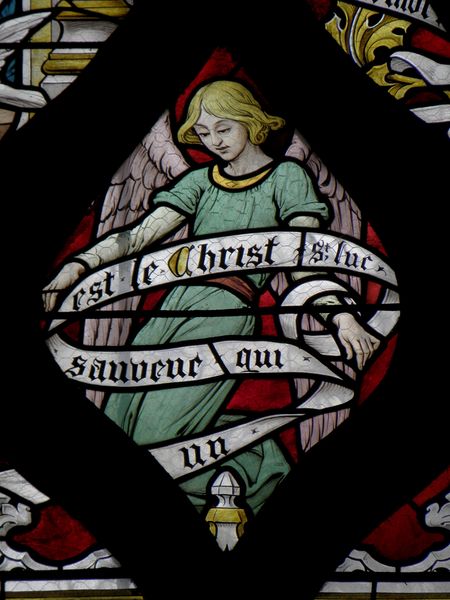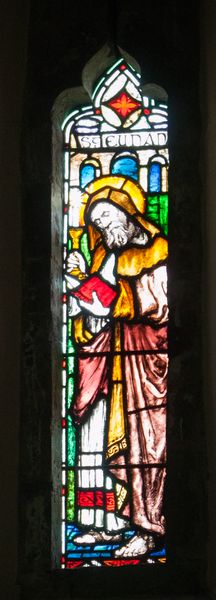
mosaic, glass
#
mosaic
#
medieval
#
repeated pattern
#
loose pattern
#
pattern
#
geometric pattern
#
glass
#
abstract pattern
#
repetition of pattern
#
vertical pattern
#
complex pattern
#
pattern repetition
#
repetitive pattern
Copyright: Public domain
Curator: Here we have a vibrant stained-glass panel, "Loughrea St. Brendan's Cathedral" crafted by Sarah Purser in 1908. What's your immediate impression? Editor: It strikes me as having an almost manufactured medievalism, a pastiche more than a genuine reflection. I mean, look at the highly stylized fleur-de-lis on Mary’s robe. There's a definite industrial aesthetic married with the handcrafted here, isn't there? Curator: Absolutely. Purser, while deeply involved in the Arts and Crafts movement, was very aware of the evolving role of Irish national identity at the time and used the commission as a public statement. The Cathedral itself was a nationalist project, conceived with local materials and Irish artists in mind. Editor: And the medium speaks volumes, doesn't it? The repetitive patterns, even in the 'random' placement of colored glass fragments. There is something intrinsically about working with pre-made components assembled by teams. How do you view Purser’s production within that frame of social practice? Curator: Precisely, Purser ran An Túr Gloine, a cooperative workshop committed to providing employment for women artists at a time of rampant patriarchal controls of production and artistic visibility. The use of repeated pattern nods to a sort of standardized form of workshop production even in a context like stained glass, commonly associated with craft and skill. Editor: I think the choice of medium further underlines the point, creating not just devotional iconography but using industrial-tinged manufacturing and assembly processes. Stained glass, inherently assembled from cut, colored shards, mirrors this concept elegantly! Curator: It also represents an interesting turn for women working in devotional artistic genres, and this shift had real socioeconomic impact on makers who got to engage in it. Editor: Looking at how the materials are integrated really reveals a new dimension of appreciation here. Thanks to that perspective, this panel becomes not merely a window, but a reflection of complex sociopolitical processes during the nationalist movement of its time. Curator: Indeed, this intersectional lens offers us such deeper layers to its historical relevance.
Comments
No comments
Be the first to comment and join the conversation on the ultimate creative platform.
